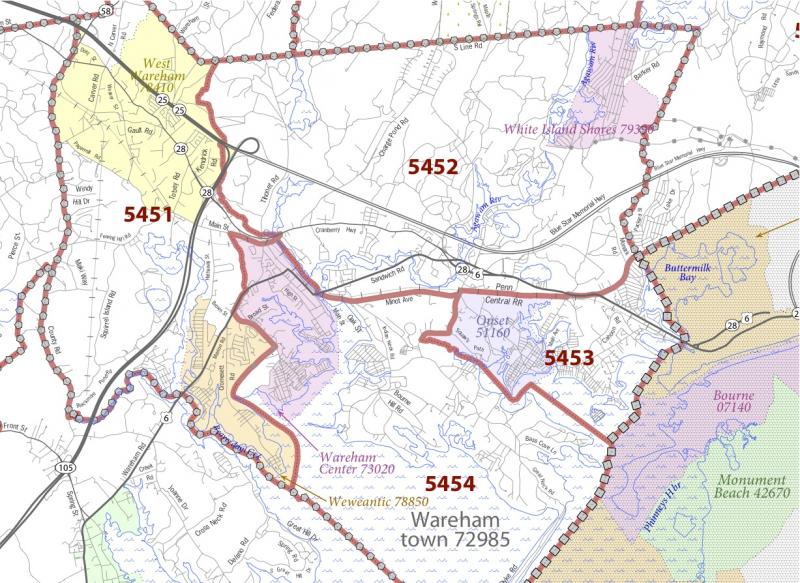Wareham by the numbers: new census data reveals rise in town's population
Wareham’s population grew by 7.3% from 2000 to 2010, or by a total of 1,487 residents, according to U.S. Census data released this week. Wareham's total population is now 21,822 up from 20,335.
Interestingly, the total number of housing units in town grew even faster, with the Census identifying an additional 1,586 housing units in town for a 15% increase.
Growth during the 10-year period – in both population and housing units -- was concentrated in West Wareham and Onset.
And while Wareham remains overwhelmingly white, it has become slightly more diverse in the past 10 years. Both the Asian and Hispanic population in town each grew by more than 50% since 2000. The white population stood at 87% of the total population in 2000, and had dropped to 85% in 2010.
For data-gathering purposes, the Census divides Wareham into four tracts:
- West Wareham – comprising what is commonly known as West Wareham, south to Cromesett Point
- Wareham Center – that includes all of Wareham Center stretching to Great Neck
- Onset – which covers Onset Village to the Bourne line
- White Island Shores – comprised of northeast Wareham, including Shangri-La
Population increased in all four areas. The West Wareham tract saw the biggest population growth, welcoming 829 new residents to the area, while the Wareham Center tract saw most modest increase in population, adding 79 new residents.
Wareham beat out neighboring towns Bourne, Mattapoisett, and Marion in population growth. Wareham fell behind Plymouth’s 9.22% population growth. While metropolitan areas like Boston, Worcester, and Lowell saw a spike in population, the Cape Cod region lost many of its residents, according to the data.
Of the total 12,256 housing units identified in town, the Census listed 9,071 as "occupied" and 3,185 as "vacant." A Census spokesman said that additional data to be released this summer would provide a more specific breakdown of Wareham's housing stock, providing better information on permanent vs. seasonal vs. truly unoccupied homses. In the current data, he said, "vacant" simply means that Census takers reported that there was no one living in the house at the time of the Census.
This week’s release of town-level data from the 2010 Census was just the first batch of numbers – with much more to come. The basic population numbers will be used at the state level to help redraw congressional districts as Massachusetts will lose one congressional seat as the weight of U.S. population shifts away from the northeast.
Of course, all the new information poses as many questions as it answers. We at Wareham Week and WarehamVillageSoup.com will be asking those questions and getting the answers online and in future editions of the paper.















